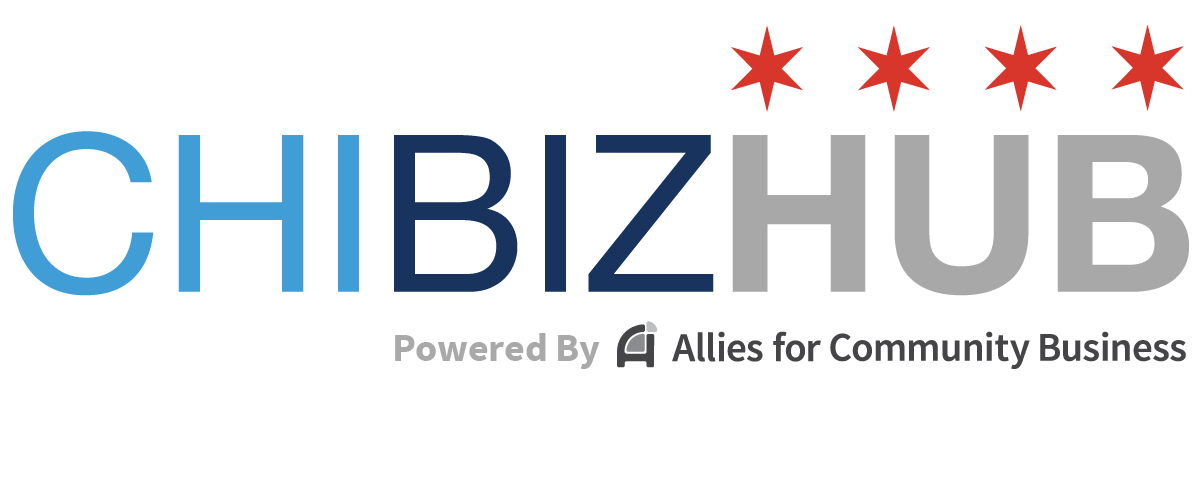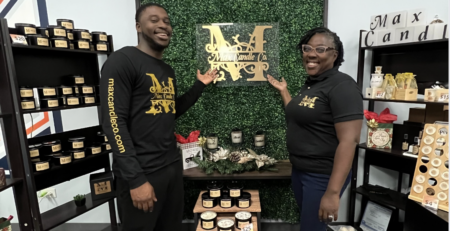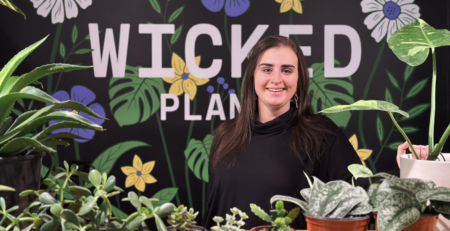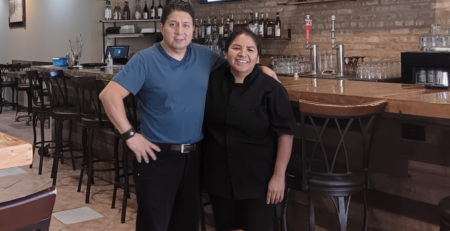Julia Perkins, Studio Yogi
Yoga Studio, Chicago
Organizations: SomerCor, Community Reinvestment Fund, USA, Local Initiatives Support Coalition (LISC) Chicago
Services Utilized: Apply for a Grant, Apply for a Loan
After 25 years as a nonprofit consultant, Julia Perkins didn’t expect to start a yoga studio. After being diagnosed with osteoarthritis at 50 years old, Julia says, “I discovered yoga, and I fell in love with it and started practicing. But I would always have to go outside of my community to go to a class.” While Julia was considering opening a studio in her neighborhood of South Shore, she attended an informational session for the Neighborhood Opportunity Fund (NOF) in 2019 and thought “Wow, this would be such a great opportunity.”
With only a seedling of an idea, she worked with a realtor to find a space in South Shore. Julia put in a proposal for the renovation of four empty storefronts that became Studio Yogi, a nearly 6,500 square foot health and wellness space. She was awarded a $250,000 NOF grant and worked with ChiBizHub partner SomerCor, a nonprofit small business lender who administers the NOF grant program in partnership with the City of Chicago.
After working with multiple architects and contractors, the Studio Yogi building project quickly became much more expensive and complicated than Julia anticipated, but she was determined to realize her vision of building a beautiful new yoga space for the South Shore community. “SomerCor was wonderful as far as providing insights and recommendations on what I could do to get additional dollars to support the project,” Julia said. After going to seven or eight lenders to try to raise the full $1.4 million of the project cost, Julia found support in a loans from ChiBizHub partners Community Reinvestment Fund (CRF) and Local Initiatives Support Coalition (LISC). She also received a grant from We Rise Together.
Julia says inclusivity is central to Studio Yogi’s mission. “It is a beautiful studio. It can rival any studio on the North Side,” Julia said. “And that was the intent, to make sure the space was a place where people feel welcome, that would nurture a sense of community, and that was accessible.”
Julia feels that that some students may deal with body dysmorphia. “I want to uplift the anatomical uniqueness of our students. It’s not about ‘making the body fit into the posture.’ It’s about making the posture work for the body.” In addition to dealing with students across a wide range of ages and abilities, Julia also has a commitment to make yoga affordable for the residents of South Shore, while building a profitable business. “The vision for the future is to have a solid membership base,” Julia said. “Most businesses don’t make money for the first few years. I understand this and am committed to ‘staying the course’ until [we] can be profitable.”
Her face lights up when she reflects upon the journey so far. “It’s growing. Studio Yogi will be a year [old] come February.”
Develop Your Idea – Studio Yogi
1. Identify the Problem
What is the problem you are trying to solve?
“We did not have a yoga studio within the community. I would always have to go outside of my community to go to a [yoga] class. I didn’t understand why we couldn’t have one in South Shore. I think there were enough people interested in the community. There was no permanent facility. There are facilities like the ‘Y’ that would offer a yoga class, but there was no dedicated facility just for yoga.”
What is my product?
“Studio Yogi offers a variety of yoga styles. It’s just not a Vinyasa studio. We offer Sound Healing, Meditation, Kemetic Yoga, Egyptian Yoga, Restorative Yoga, Yin Yoga, and Hot Yoga. The intention was to expose [South Shore] residents to a variety of yoga styles.”
How will I price it?
“I live in an under-resourced community, and definitely mixed-income, with 35% earning less than $25,000 and 23% earning below $50,000. So, my price points had to be accessible. For instance, the drop-in class is $12. You go to some other studios, and their drop-in class is $25 or $35. My membership price is $79/month. That gives you access to all of the classes. Which is half or more than half of the other yoga studios in the city. It was very important in building the studio and the business plan that it could be accessible to as many people as possible.”
2. Define Your Ideal Customer
“The ideal yoga student is between the ages of 25-65, and are either new to yoga and have a desire to learn, or seasoned practitioners who wish to continue their practice in an inclusive community setting. In addition, these individuals also prioritize health and wellness in their lifestyles.”
3. Prepare to Sell Your Product
How will I market my new idea?
“This is an ongoing process. I didn’t have marketing dollars. Word-of-mouth and social media have been critical in promoting the studio, along with offering free community classes. I also am trying to find organizations within the community that I could partner with. These are ways that I could generate awareness of Studio Yogi and hopefully, for some, will convert them to be a student at the studio.”











